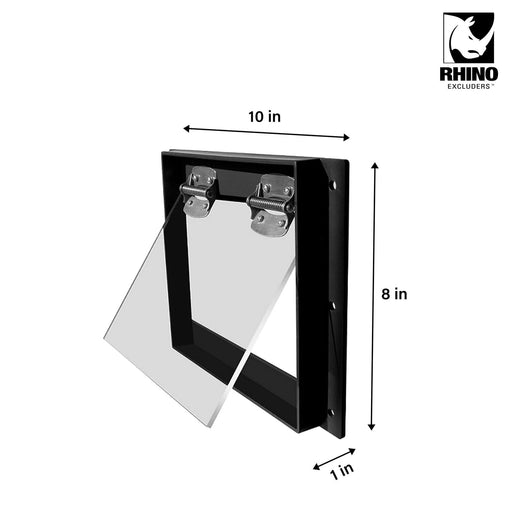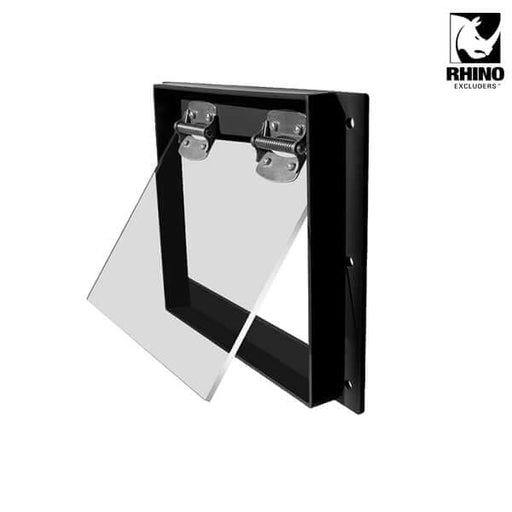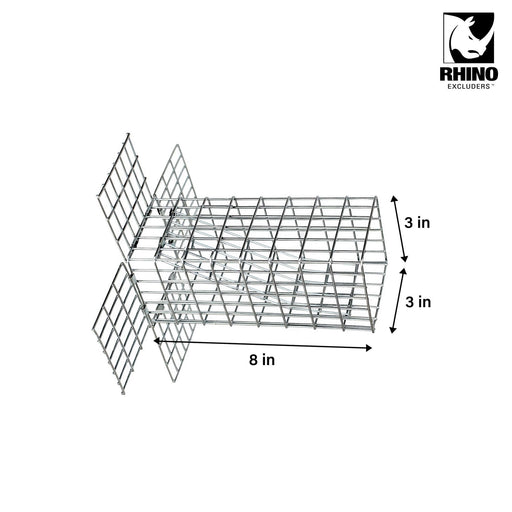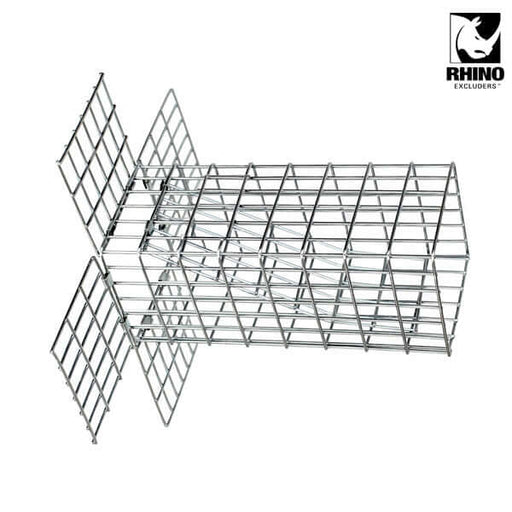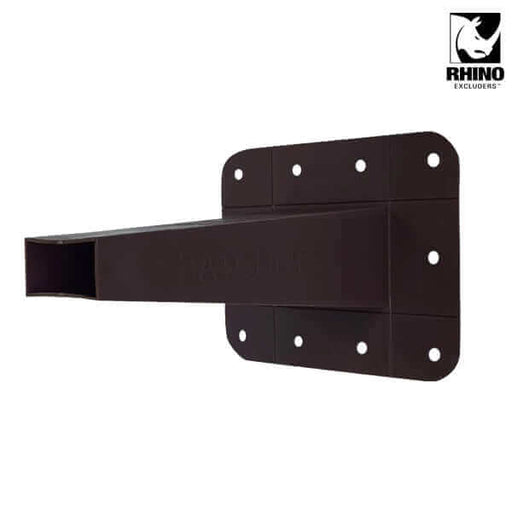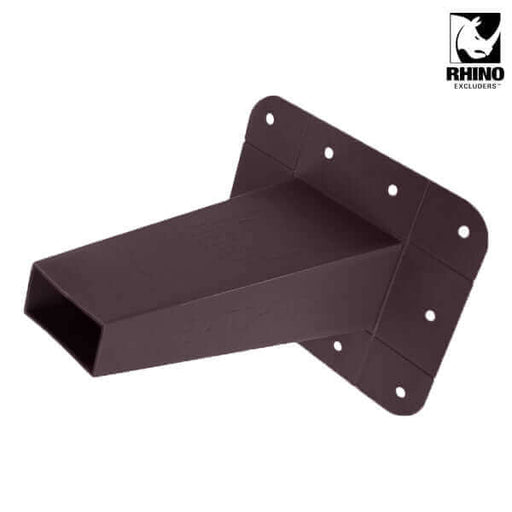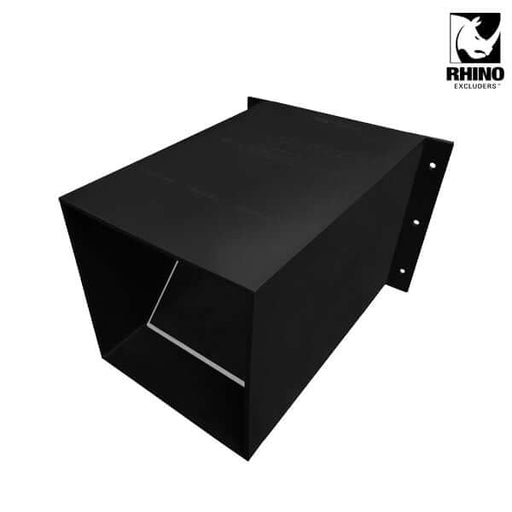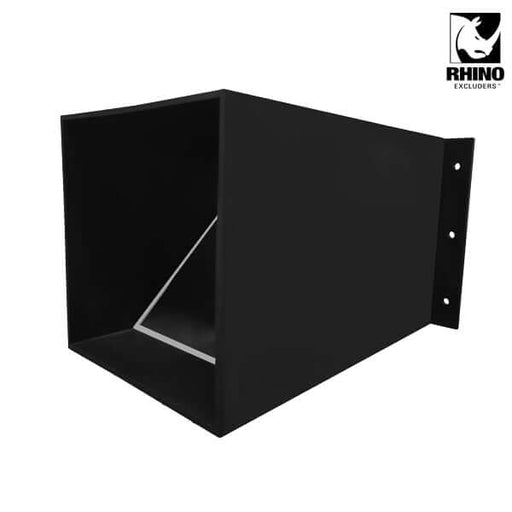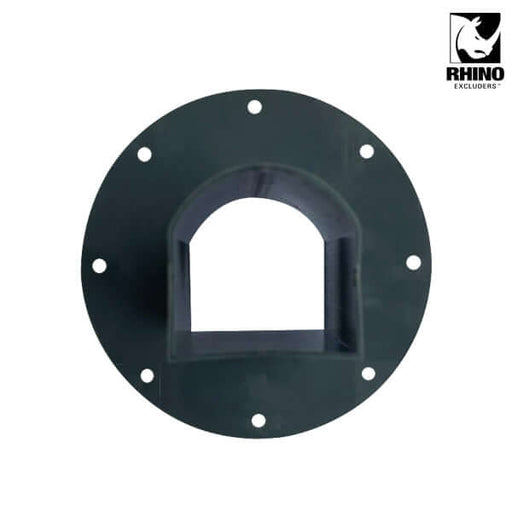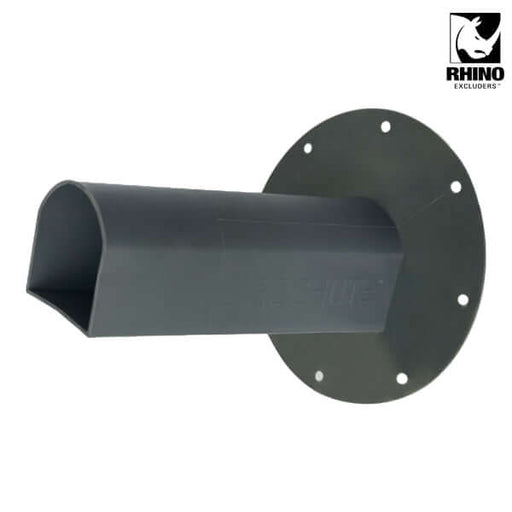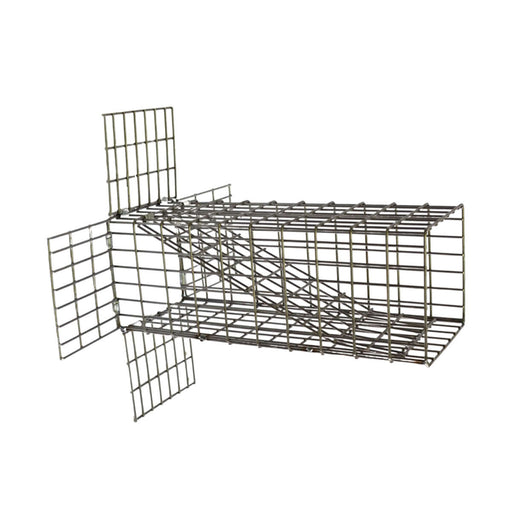
HOW TO GET RID OF RACCOONS USING RHINO EXCLUDERS® ONE WAY DOOR
How To Get Rid Of Raccoons Like A Professional
If a raccoon chooses your property for their own home, it’s essential to understand its behavior and what you can do to evict them humanely. Otherwise, raccoons can cause significant damage in just a short amount of time.
Not only can they wreak havoc on your garden and crops, but they can also do massive amounts of home and property damage. Not to mention, they pose a risk to humans and other animals. Let’s learn more about raccoon behavior before discussing how to humanely remove them.
Raccoon Behavior
Raccoons are relatively independent creatures once they reach the age of 12-14 months. They are incredibly skillful animals, able to open doors and objects. They are known to be very curious. Great climbers can also get easy access to food and shelter.

Raccoon Mating & Breeding Habits
Mating begins in late winter each year, and babies are born in April and May. Mothers can birth anywhere between 1-6 kits and eventually separate from them after about a year. Female raccoons are also known to be very protective of their young.

Nesting Habits
Raccoons are most energetic during the spring, summer, and fall. They spend most of their winters asleep in their dens. They are also nocturnal, and most activity is at night. In the wild, they live in a hollow of a tree. They often nest under decks/sheds, chimneys, and attics in urban settings.
Raccoon Diseases
The most common infectious diseases of raccoons are rabies, leptospirosis, salmonella, and roundworm.
Raccoon Damage
Due to their wide range of skills, raccoons can be quite destructive. Damage caused by raccoons involves tipped trash cans, invaded bird feeders, damaged crops, damaged roof shingles, or missing food from gardens. It’s no surprise people want to know how to get rid of raccoons on their property!



Removal Myths
There are all kinds of raccoon removal myths out there. Often, well-meaning advice does nothing to eradicate your raccoon problem. One of the most common myths about raccoon removal is that playing a radio in your attic will get rid of them. While it’s true raccoons may not be big fans of loud noises and lights, it’s not an effective method for getting rid of them.
Laws & Regulations
Pest control must always follow the provincial law that protects wildlife. Rabies-carrying species, including raccoons, bats, and skunks, must be released within 1km of their point of origin in most places. Laws usually require captured wildlife to be released within 24 hours of capture. Each state is different, it's best to call your local government agency for more information.
Raccoon Baby Season
Babies are usually born in April and May but may come as early as March or even later into June. In March, be sure to watch for signs of raccoons looking for warm places to have their babies. It is common for them to seek out a space in your attic as it is high up from predators and provides a cozy, comfortable space. There is an average of 3 to 6 babies in every litter.

Raccoon Best Removal Method Using Excluder One-Way Door
This is by far the best raccoon removal method. It uses a one-way door to exclude the raccoons from your attic, deck or chimney. A one-way door is a special device that lets the raccoons out of a space like your attic, but not back in. This method works because it removes all access points for the raccoons, so they can't get back into your attic once they're out.


Here's how you do it:
Step 1: Inspect the property for sings of damage/entry point. This could be soffit, junction, roofline, roof vent, roof pipe, chimney or under the deck/shed.

Step 2: Check the den site for possible babies during raccoon baby season (Spring/Summer). Babies will not exit the den until fully mobile. You either need to wait until they are mobile or remove them physically before installing the R108 one way door. They need to be placed in an incubator outside where they can reunite with their mother. Mother raccoon will relocate them to a secondary den.


Step 3: Install Prochute™ one way door OR R108 one way door over the entry hole. If the hole is larger than the door, you will need extra material to seal around it.


Step 4: Protect/seal other vulnerable areas to stop future intrusions. Ex. if raccoon is getting in from 1 roof vent and you have 4 more vents beside it. It makes sense to protect those other 4 vents otherwise there is always a possibility that an animal can damage those areas and get in.

Step 5: Wait 24 to 72 hours for raccoons to remove themselves. Eviction typically happens on the first night but some raccoons might need more time.
Step 6: Do a second inspection for any signs of new damage/entry point. If you see one, seal it. There's a one way door installed already and raccoons can once again exit.
Step 7: Once eviction has been confirmed (No more noise/activity/damage), remove the raccoon one way door and repair the area (if necessary). Make sure to protect the repaired area with screening to stop future re-entry. Note: raccoons are known to visit past den sites months after eviction. If there is no protection, they will get back in.
Purchase Prochute™ One Way Door
Purchase R108 Raccoon Excluder
Rhino Excluders™ Collection
-
Original price $54.99Original price $54.99 - Original price $54.99Original price $54.99Current price $44.99$44.99 - $44.99Current price $44.99
R108 - Rhino Excluders® Raccoon One Way Door
Rhino Excluders®In stockABS Plastic body | Light weight | 10” x 8” x 1” Are you tired of dealing with persistent raccoon intrusions? Say goodbye to those frustrating encou...
View full detailsOriginal price $54.99Original price $54.99 - Original price $54.99Original price $54.99Current price $44.99$44.99 - $44.99Current price $44.99Save 18% -
Original price $32.99 - Original price $32.99Original price$32.99$32.99 - $32.99Current price $32.99
S33 - Rhino Excluders® One Way Squirrel Door
Rhino Excluders®In stockS33 Rhino Excluders® One Way Squirrel Door (for Squirrels, Chipmunks, Rats & Similar Size Rodents) 14 Gauge | 8” x 3” x 3” Introducing the S33 ...
View full detailsOriginal price $32.99 - Original price $32.99Original price$32.99$32.99 - $32.99Current price $32.99 -
Original price $24.99Original price $24.99 - Original price $24.99Original price $24.99Current price $21.99$21.99 - $21.99Current price $21.99
Rhino Excluders® BATCHUTE™ One Way Bat Door
Rhino Excluders®In stockRhino Excluders® BATCHUTE™ One Way Bat Door Polypropylene (PP) Plastic body | 7” x 6.5” x 5” BATCHUTE™ One Way Bat Door is designed to humanely rem...
View full detailsOriginal price $24.99Original price $24.99 - Original price $24.99Original price $24.99Current price $21.99$21.99 - $21.99Current price $21.99Save 12% -
Original price $64.99Original price $64.99 - Original price $64.99Original price $64.99Current price $49.99$49.99 - $49.99Current price $49.99
Rhino Excluders® PROCHUTE™ One Way Door for removal of Raccoons, Skunks, Groundhogs, Opossums
Rhino Excluders®In stockRhino Excluders® PROCHUTE™ One Way Door Durable 5mm ABS Plastic body | 11” x 9” x 7” Prochute™ Excluder is perfect for removing raccoons, skunks, o...
View full detailsOriginal price $64.99Original price $64.99 - Original price $64.99Original price $64.99Current price $49.99$49.99 - $49.99Current price $49.99Save 23% -
Original price $24.99Original price $24.99 - Original price $24.99Original price $24.99Current price $21.99$21.99 - $21.99Current price $21.99
Rhino Excluders® BIRDCHUTE™ One Way Bird Door for removal of Birds
Rhino Excluders®In stockRhino Excluders® BIRDCHUTE™ One Way Bird Door Polypropylene (PP) Plastic body | 7” x 6.5” x 6.5” Birdchute™ One Way Bird Door is perfect for removi...
View full detailsOriginal price $24.99Original price $24.99 - Original price $24.99Original price $24.99Current price $21.99$21.99 - $21.99Current price $21.99Save 12% -
Original price $34.99 - Original price $34.99Original price$34.99$34.99 - $34.99Current price $34.99
S35 Rhino Excluders® One Way Door For Squirrels, Chipmunks, Rats & Similar Size Rodents
Rhino Excluders®In stockS35 Rhino Excluders® One Way Door For Squirrels, Chipmunks, Rats & Similar Size Rodents 14 Gauge | 10” x 3.5” x 3.5” Introducing the S35 Rhino ...
View full detailsOriginal price $34.99 - Original price $34.99Original price$34.99$34.99 - $34.99Current price $34.99

